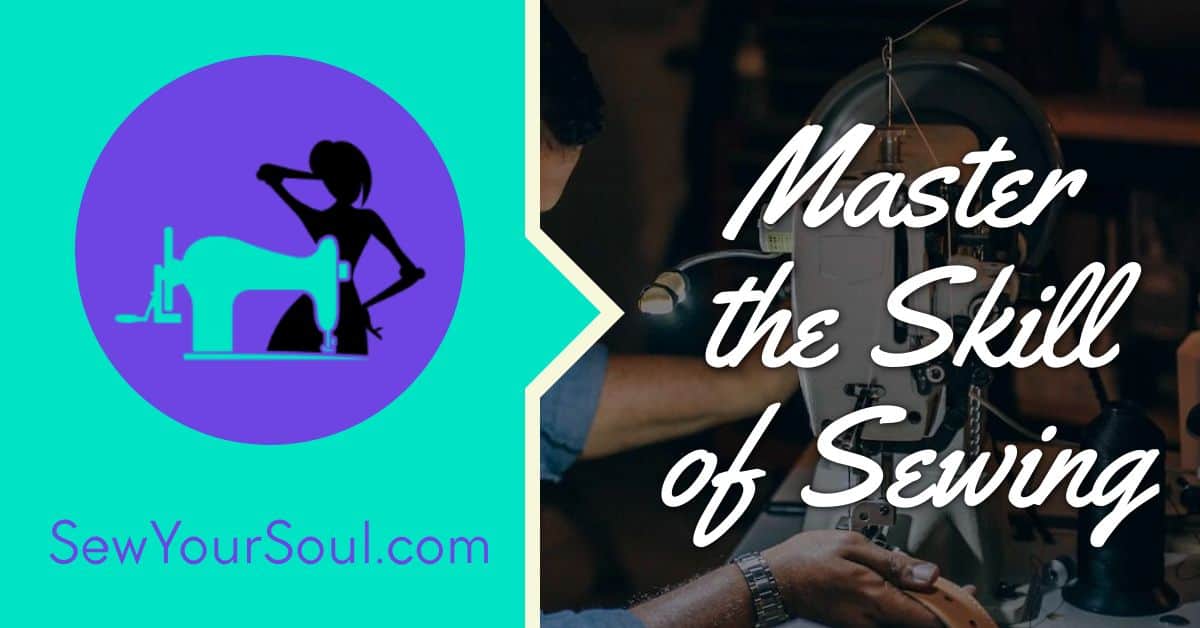Are you interested in learning the best way to sewing? Whether you’re a beginner or have some experience, sewing can be a rewarding and practical skill to have. In this article, we’ll explore some tips and techniques to help you improve your sewing skills and create beautiful projects. From choosing the right fabric to mastering essential stitches, we’ll cover everything you need to know to get started on your sewing journey. So, grab your needle and thread, and let’s dive into the world of sewing!
Have you ever wondered what the best way to sewing is? Look no further! In this article, we’ll share some valuable insights and techniques to help you become a skilled seamstress. Whether you want to create your own clothes, make alterations, or simply enjoy the therapeutic nature of sewing, we’ve got you covered. From selecting the right sewing machine to understanding different types of stitches, you’ll gain the knowledge and confidence to tackle any sewing project. So, let’s get started and unleash your creativity through the art of sewing!
Understanding the Basics of Sewing
Once you have gathered all your materials and are ready to embark on your sewing journey, it’s important to understand the basics of sewing. These foundational skills will set you up for success and ensure that your sewing projects turn out beautifully.
Choosing the Right Fabric
When it comes to sewing, selecting the right fabric is crucial. Consider the weight, drape, and stretch of the fabric before making your decision. Lightweight fabrics like cotton and silk are great for making flowy garments, while heavier fabrics like denim and wool are ideal for creating structured pieces. Don’t forget to prewash your fabric to avoid any shrinkage or distortion after sewing.
Essential Stitches
Mastering a few essential stitches will give your sewing projects a professional finish. The straight stitch is the most basic and versatile stitch, used for joining fabric pieces together. The zigzag stitch, on the other hand, is perfect for finishing edges, preventing fraying, and adding stretch to seams. Practice these stitches on fabric scraps before moving on to your main project to ensure precision and neatness.
Understanding Sewing Machine Functions
If you’re using a sewing machine, take the time to acquaint yourself with its various functions. Familiarize yourself with the different types of stitches your machine offers, such as straight stitch, zigzag stitch, and buttonhole stitch. Adjust the stitch length and width based on the type of fabric and the effect you want to achieve. Always refer to your machine’s user manual for specific instructions and never hesitate to experiment and practice on scrap fabric to get comfortable with your machine.
Seam Finishes
To prevent unraveling and ensure the longevity of your seam, it’s important to finish the raw edges. There are several seam finishing techniques you can use, such as zigzag stitching, serging, binding, or using bias tape. Each technique provides a different look and level of durability, so choose the one that suits your project and fabric best.
Pressing and Ironing
Never underestimate the power of pressing and ironing in sewing. Pressing helps set seams, flatten fabric, and make your sewing lines crisp and clean. Use a press cloth to protect delicate fabrics. Ironing your finished projects will give them a polished and professional look.
Remember, Rome wasn’t built in a day, and the same goes for mastering sewing. **Practice
Choosing the Right Sewing Machine for You
When it comes to sewing, having the right tools is essential. And one of the most important tools you’ll need is a sewing machine. But with so many different types and models available, how do you choose the right one for you? Don’t worry, I’m here to help!
Here are some key factors to consider when selecting a sewing machine:
1. Determine your sewing needs: Think about the kind of projects you’ll be working on. Are you a beginner looking to learn the basics? Or do you plan on tackling more complex projects like quilting or garment making? Knowing your sewing goals will help you choose a machine that can handle the tasks you have in mind.
2. Consider your budget: Sewing machines come in a wide range of prices, so it’s important to set a budget before you start shopping. While it’s tempting to go for the latest and most expensive model, remember that there are great options available at various price points. Don’t break the bank if you don’t have to!
3. Test before you buy: Visit a local sewing store and test out different machines. Pay attention to how easy they are to use, the sound they make, and the quality of stitches they produce. This hands-on experience will give you a better idea of how each machine feels and performs.

4. Look for essential features: Consider the features that are important to you. Do you want a machine with a wide range of stitch options? Automatic needle threading? Adjustable speed control? Make a list of your must-have features and use it as a guide when comparing different models.
Remember, choosing the right sewing machine is a personal decision. What works for someone else may not work for you. Take your time, do your research, and don’t rush into making a purchase. A well-chosen sewing machine will be your trusted sewing companion for years to come!
Essential Sewing Tools and Supplies
When it comes to sewing, having the right tools and supplies can make all the difference in the quality of your work. Whether you’re a beginner or a seasoned pro, having a well-stocked sewing kit is essential for any project. Here are some must-have items that should be in every sewer’s toolbox:
Sewing Machine
A reliable sewing machine is the backbone of any sewing project. Make sure to invest in a machine that suits your needs and budget. Look for features such as adjustable speed control, a variety of stitches, and easy threading. Don’t forget to test out different machines before making a decision – what works for someone else might not work for you!
Fabric Scissors
Having a good pair of fabric scissors is crucial for precision cutting. Look for scissors with sharp, stainless steel blades that can easily glide through different types of fabric. Remember to keep them separate from other scissors in order to maintain their sharpness.
Seam Ripper
« Discover the Surprising Benefits of Teaching Sewing in Schools – You Won’t Believe the Impact it Has
Unveiling the Unbeatable Sewing Machines: Meet the Game-Changing Brands That Outlast the Rest »
Mistakes happen, and a seam ripper is your best friend when it comes to undoing stitches. Look for one with a sharp point and a comfortable grip. It will save you time and frustration when you need to fix mistakes or make alterations.
Pins and Needles
Pins and needles are essential for holding fabric in place as you sew. Invest in high-quality pins that won’t damage your fabric and are easy to handle. For needles, make sure to have a variety of sizes on hand to accommodate different fabrics and projects.
Measuring Tape
Accurate measurements are crucial for a successful sewing project. A flexible measuring tape allows you to measure both straight lines and curves. Look for one with clear markings and a convenient locking mechanism.
Thread
Choose a good quality thread that matches your fabric. Cotton is a popular choice for most projects, but specialty threads, such as polyester or silk, might be required for specific fabrics. Make sure to stock up on a variety of colors so you’re always prepared.
Other Essential Supplies
Other essentials include a pincushion or magnet to keep your pins and needles organized, a thimble to protect your fingers, and a fabric marker or chalk for marking patterns on fabric.
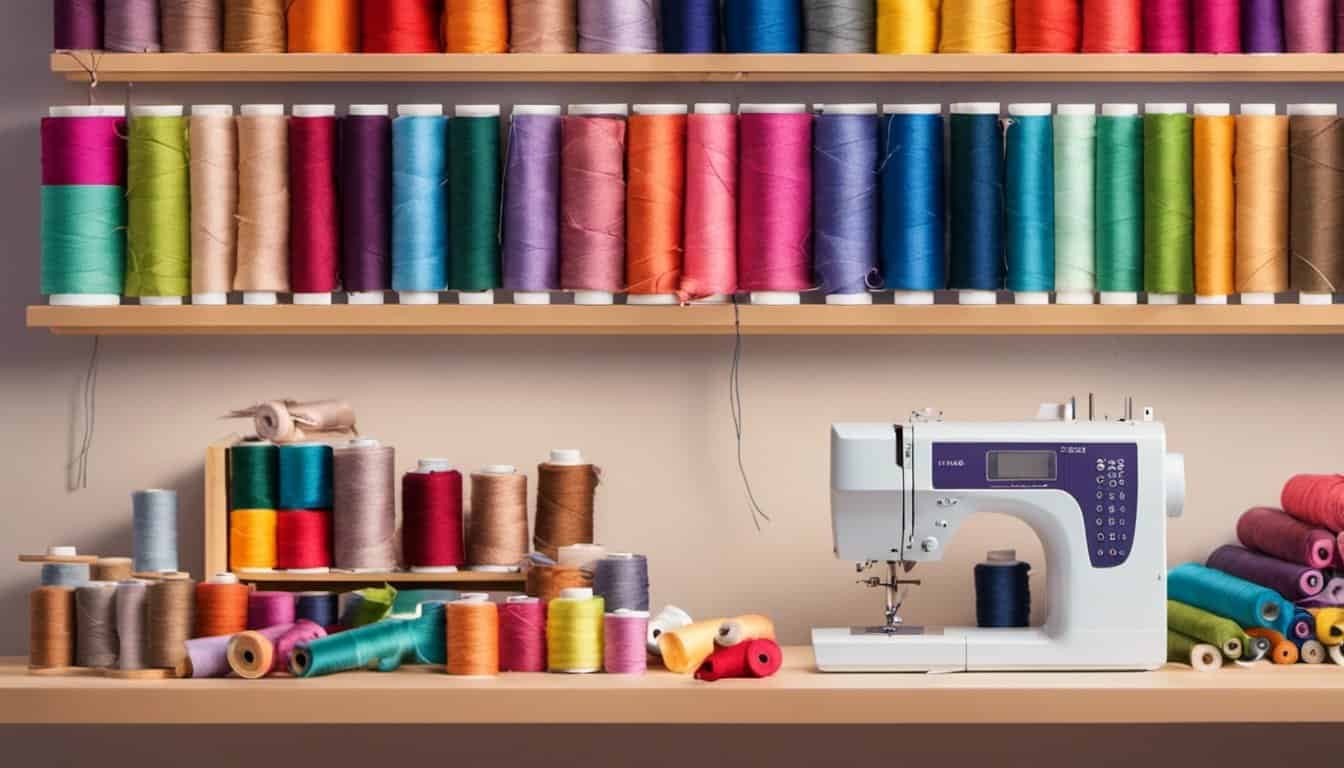
Learning Different Types of Stitches
Now that you have your fabric and sewing machine ready, it’s time to explore the world of stitches. Sewing stitches are like the building blocks of any sewing project. Understanding different types of stitches is essential for achieving professional-looking results. So, let’s dive into some of the most commonly used stitches and how to master them.
1. Straight Stitch: This is the basic stitch that every sewist should know. It’s used for simple seams, topstitching, and gathering fabric. To create a straight stitch, simply set your sewing machine to the straight stitch setting and align the fabric under the needle. Start sewing, keeping the fabric straight and steady as the machine stitches forward.
2. Zigzag Stitch: The zigzag stitch is versatile and often used for finishing raw edges, sewing stretch fabrics, and creating decorative elements. It helps prevent fraying and adds flexibility to seams. To create a zigzag stitch, adjust your machine’s settings to the zigzag stitch and experiment with different stitch widths and lengths to achieve the desired effect.
3. Overlock Stitch: The overlock stitch, also known as the serger stitch, is commonly used to finish raw edges and seams. It creates a professional-looking, neat finish that prevents fraying and adds durability. If you have a serger machine, refer to the machine’s manual to set up the overlock stitch. Otherwise, some sewing machines have an overlock stitch function you can use.
4. Decorative Stitches: Once you’ve mastered the essential stitches, it’s time to get creative with decorative stitches. These stitches add flair and personality to your sewing projects. You can explore a wide variety of decorative stitches on your sewing machine, such as scallop, flower, or feather stitches. Play around with different stitch lengths, widths, and patterns to embellish your creations.
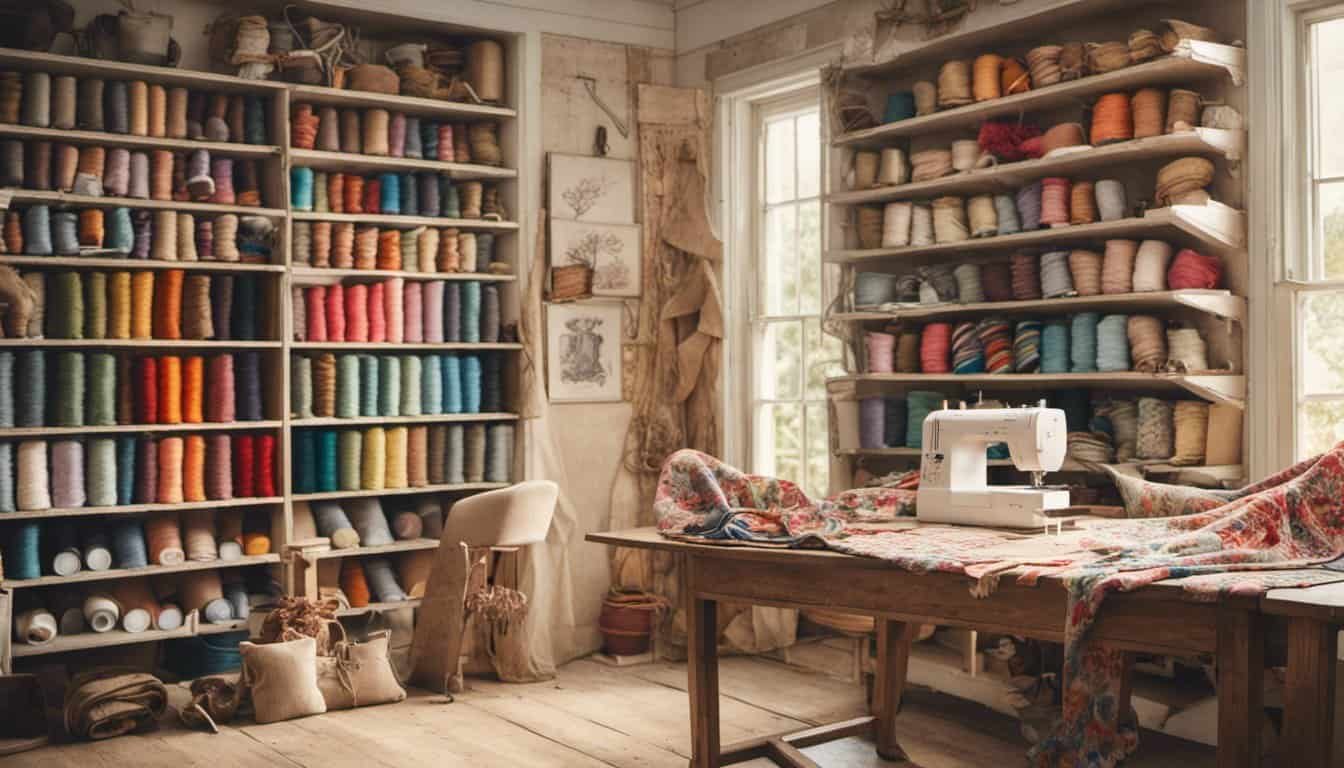
Remember, practice makes perfect when it comes to sewing stitches. Take your time to familiarize yourself with each stitch and experiment with different fabrics and thread types. As you gain more experience, you’ll develop a better understanding of which stitches work best for specific projects.
Fabric Selection and Preparation
When it comes to a successful sewing project, choosing the right fabric is essential. The fabric you use can make or break your final outcome. So, here are a few tips to help you select and prepare your fabric for the best sewing experience possible!
1. Consider the project: Think about the type of project you’re working on and the fabric requirements. Is it a garment that requires drape? Or a sturdy tote bag that needs to hold its shape? Understanding the fabric needs of your project will help you make an informed choice.
2. Fabric composition: Take a close look at the fabric composition. Is it 100% cotton, linen, silk, or a blend? Each type of fabric has its own characteristics, and it’s important to choose one that suits your project. Consider factors such as durability, stretch, and breathability.
3. Print or pattern: If you’re working with a print or pattern, consider the scale and direction of the design. You want to ensure that the pattern placement looks good on your finished project.
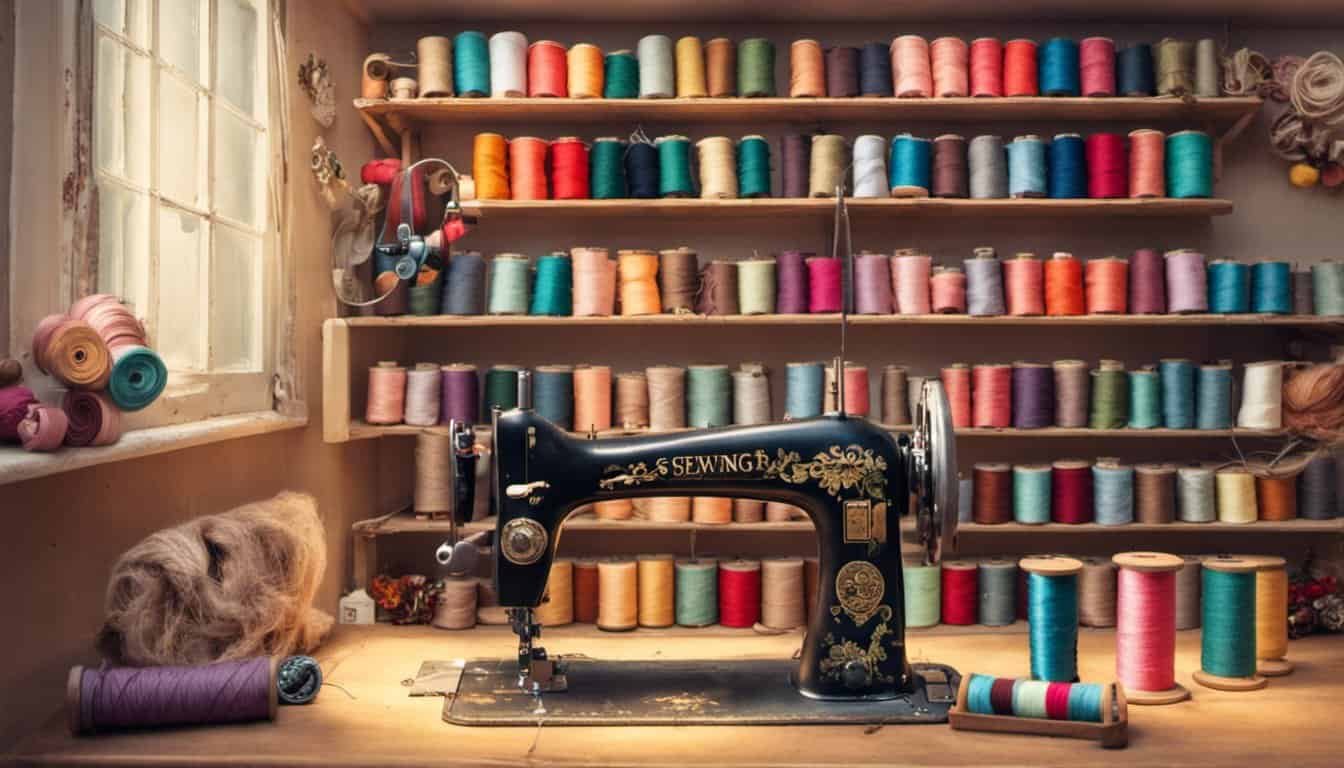
4. Pre-washing: Before you start cutting and sewing, it’s crucial to pre-wash your fabric. Pre-washing helps to remove any shrinkage and allows the fabric to settle into its natural state. Follow the manufacturer’s instructions for pre-washing your fabric.
5. Pressing and ironing: Once your fabric is washed and dried, give it a good press with an iron. This step helps to eliminate any wrinkles and gives your fabric a smooth and even surface. Remember to use the appropriate heat setting for your fabric type.
Preparing your fabric properly before you start sewing ensures that you have a clean, well-prepared canvas for your project. It sets you up for success and helps your sewing journey go smoothly from start to finish.
Sewing Techniques and Tips for Beginners
As someone who is new to sewing, embroidery, knitting, or any craft project, it’s important to start with the basics. Here are some valuable sewing techniques and tips to get you started on your creative journey:
1. Start with Simple Projects
When you’re just starting out, it’s best to begin with simple sewing projects. This will help you familiarize yourself with the sewing machine and build your confidence. Simple projects can include making pillowcases, drawstring bags, or even a basic skirt. Start small and gradually challenge yourself with more complex patterns.

2. Practice Makes Perfect
Sewing is a skill that requires practice. Don’t be discouraged if your first few stitches don’t turn out exactly how you envisioned. Keep practicing and experimenting with different fabrics, stitches, and techniques. With time, you’ll develop your own sewing style and improve your skills.
3. Take it Slow and Steady
When sewing, it’s important to take your time. Rushing through a project can lead to mistakes and sloppy workmanship. So, be patient and focus on each step of the process. By taking it slow and steady, you’ll achieve better results and enjoy the sewing experience even more.
4. Get to Know Your Sewing Machine
Understanding the functions of your sewing machine is essential. Take some time to read the manual and familiarize yourself with the different settings and features. Learn how to thread the machine, change the needle, and adjust the tension. Knowing your machine inside out will make your sewing projects much easier and more enjoyable.
5. Experiment with Different Stitches
There are numerous stitches to explore, each with its own purpose and effect. Start by mastering the straight stitch, which is the foundation of most sewing projects. Then, move on to the zigzag stitch for finishing edges and securing stretchy fabrics. Don’t be afraid to experiment with decorative stitches to add a personal touch to your creations.
Exploring Advanced Sewing Projects
Now that you have mastered the basics of sewing and feel confident in your skills, it’s time to take your sewing projects to the next level. Exploring advanced sewing projects can be both challenging and rewarding, allowing you to expand your creativity and showcase your talent. Here are a few tips to help you navigate through the world of advanced sewing:

1. Choose complex patterns: Look for sewing patterns that offer a greater degree of difficulty. This could include patterns that involve multiple pattern pieces, intricate details, or advanced construction techniques. Sewing dresses with boning, tailored jackets, pleated skirts, or even lingerie can help you broaden your sewing skills.
2. Experiment with different fabrics: Advanced sewing projects often require fabrics that are more challenging to work with. Silk, chiffon, lace, or leather can present unique difficulties but can yield stunning results. Take your time to understand how different fabrics behave and invest in quality sewing tools to ensure professional-looking finishes.
3. Incorporate advanced techniques: Explore advanced sewing techniques such as underlining, couture hand-stitching, piping, or pleating. Adding these techniques to your repertoire will elevate your sewing projects and give them a polished and professional touch.
4. Embark on embroidery projects: Embroidery is a wonderful way to add intricate designs and details to your sewing projects. Whether it’s delicate floral motifs on a blouse or intricate monograms on personalized accessories, embroidery opens up a whole new world of creativity. Invest in an embroidery machine or practice hand embroidery to bring your sewing projects to life.
5. Expand your knowledge: Continuous learning is crucial in the world of sewing. Take advantage of online tutorials, sewing classes, and workshops to learn new techniques and stay up-to-date with current trends. Join sewing communities or clubs to connect with other sewing enthusiasts and gain inspiration from their projects.

Remember, advanced sewing projects may require more time and effort, but the sense of accomplishment and the beautiful end results are well worth it. So go ahead, challenge yourself, and let your sewing skills soar to new heights. Happy sewing!
And now that you’ve explored advanced sewing projects, you’re ready to test your skills on more intricate and challenging sewing endeavors. Let’s dive into the world of couture sewing and explore the art of creating stunning garments with meticulous attention to detail. Stay tuned for our next section on “Mastering Couture Sewing Techniques.”
Troubleshooting Common Sewing Problems
Sewing can be such a rewarding and fulfilling hobby, but sometimes, we encounter little hiccups along the way. Don’t worry, though! With a little know-how, you’ll be able to troubleshoot these common sewing problems like a pro and get back to creating beautiful projects in no time.
1. Uneven stitches: If you notice that your stitches are coming out uneven, the first thing to check is your machine’s tension settings. Make sure your machine is properly threaded, and adjust the upper thread tension as needed. Remember to always test your stitches on a scrap piece of fabric before sewing your project.
2. Skipped stitches: Nothing is more frustrating than having your machine skip stitches. This is often caused by a dull or bent needle or using the wrong needle for your fabric. Make sure to use the appropriate needle size and type for the fabric you’re working with, and change your needle regularly.
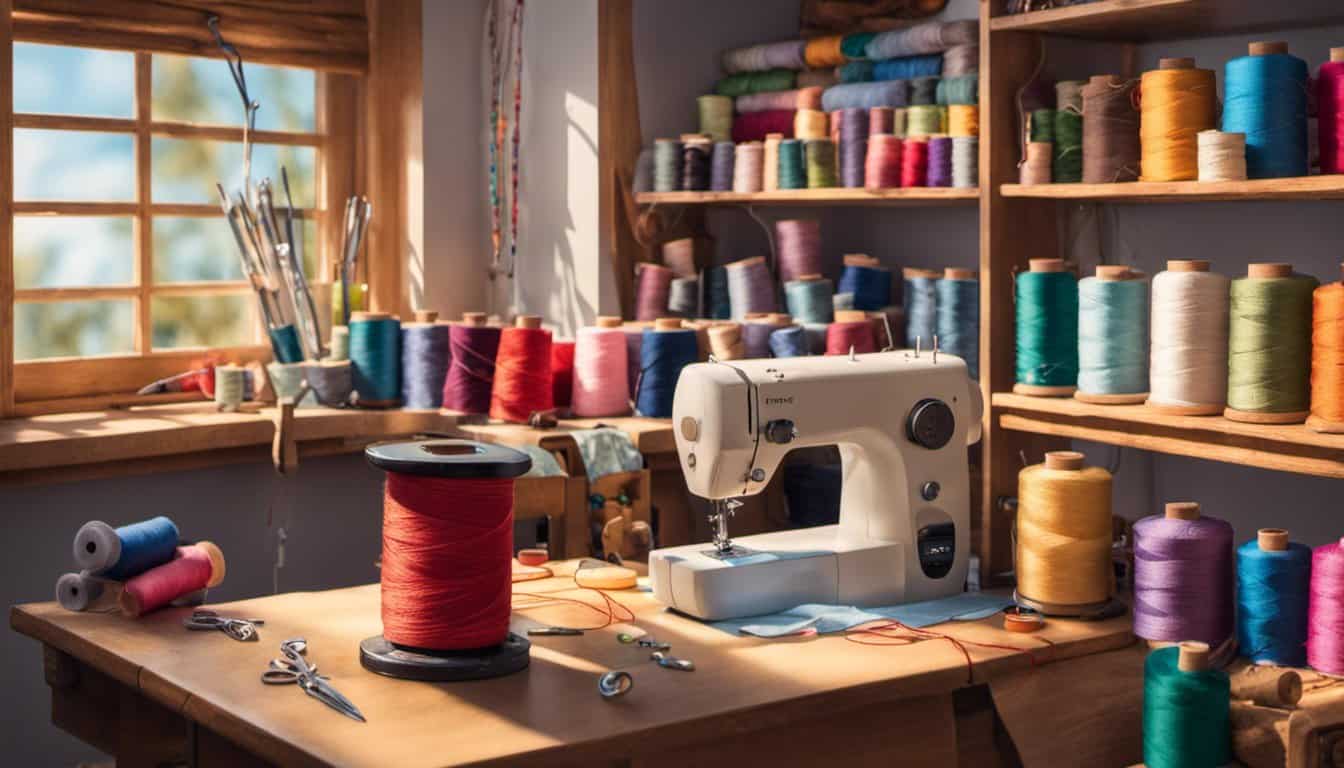
3. Thread bunching up: If you’re experiencing thread bunching up underneath your fabric, it’s probably an issue with your bobbin. Check that your bobbin is properly wound and inserted in the bobbin case. Also, ensure that the bobbin tension is correctly adjusted.
4. Breaking needles: Nobody wants to hear that dreaded “pop” of a broken needle. This can happen if you’re using the wrong needle or sewing over pins. Always use the correct needle for your fabric, and never sew over pins – remove them as you go.
5. Fabric puckering: Puckered fabric can ruin the look of your project. To avoid this, try using a stabilizer or interfacing for delicate fabrics. Also, ensure that you’re not pulling or stretching the fabric as you sew.
Taking Care of Your Sewing Machine
Now that you have learned about choosing the right sewing machine and mastering essential stitches, it’s time to talk about an often overlooked but vital aspect of sewing – taking care of your sewing machine. Proper maintenance and care of your machine will ensure that it operates smoothly and lasts for years to come. Here are a few tips to keep your sewing machine in top shape:
1. Cleaning: Regularly cleaning your sewing machine is crucial for its longevity and performance. Remove the throat plate and brush out any lint or debris that may have accumulated. Give the exterior of the machine a wipe-down and use a small brush to clean hard-to-reach areas. Follow your machine’s manual for specific cleaning instructions.

2. Oil and Lubrication: Many sewing machines require periodic oiling to keep the moving parts running smoothly. Check your machine’s manual for the recommended oil and lubrication points. Remember to use only the recommended oil and avoid over-oiling as it can attract more dust and lint.
3. Needle Maintenance: It’s important to change your needle regularly to ensure clean and precise stitching. A bent or dull needle can cause skipped stitches or even damage your fabric. Replace the needle after every project or every 8-10 hours of sewing.
4. Bobbin Care: The bobbin area can gather lint and stray threads over time, leading to tension issues. Remove the bobbin case and clean out any debris. Check that the bobbin is inserted correctly and is wound evenly.
5. Proper Storage: When you’re not using your sewing machine, it’s essential to store it properly. Cover it with a dust cover or place it in a sewing machine case to protect it from dust and debris. Keep it in a dry and clean environment to prevent rust or damage.
By following these maintenance tips, you’ll keep your sewing machine in excellent condition and avoid unnecessary repairs or frustrations during your sewing projects. Remember, a well-maintained machine is a happy machine!

Now that you’ve learned how to take care of your sewing machine, you’re ready to tackle more advanced projects and continue honing your sewing skills.
Conclusion
By following the tips and techniques outlined in this article, you can greatly improve your sewing skills. From choosing the right fabric to understanding sewing machine functions, mastering essential stitches to achieving professional seam finishes, every aspect of sewing has been covered. Remember the importance of pressing and ironing your projects for a polished look.
When it comes to choosing a sewing machine, consider your individual preferences and needs. Don’t forget to stock up on essential sewing tools and supplies to make your sewing experience more enjoyable.
Understanding different types of stitches and knowing how to select and prepare your fabric will ensure successful sewing projects. If you’re a beginner, the provided tips will help you get started, while troubleshooting tips will assist you in overcoming common sewing problems.
Lastly, don’t forget to take care of your sewing machine. Regular cleaning, oiling, needle maintenance, bobbin care, and proper storage are essential for keeping your machine in excellent condition. By following these maintenance tips, you’ll avoid unnecessary repairs and frustrations during your sewing projects.
Happy sewing!

